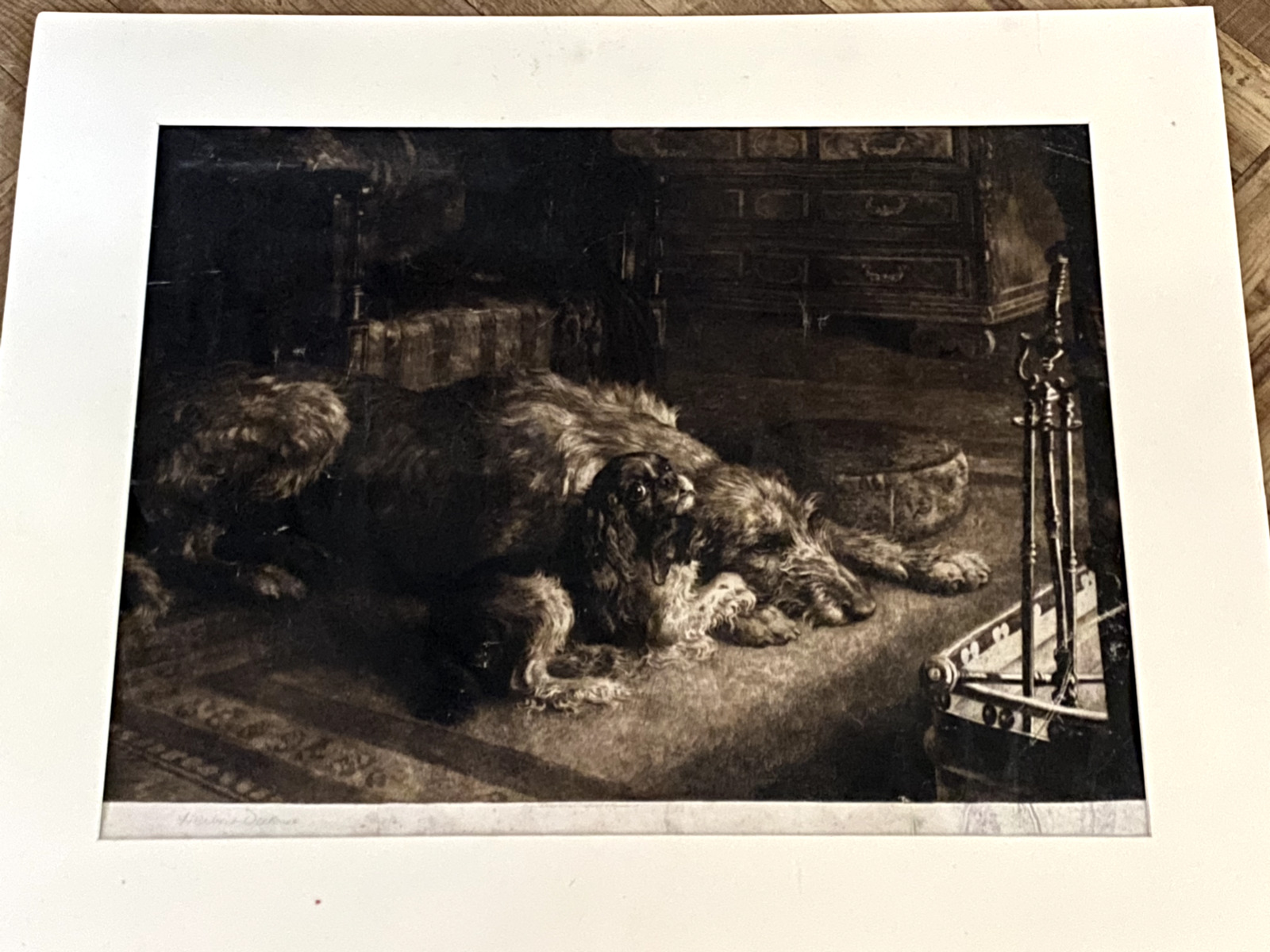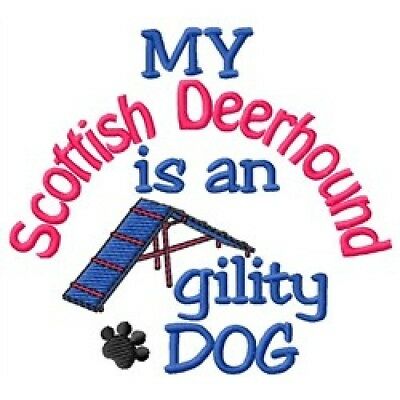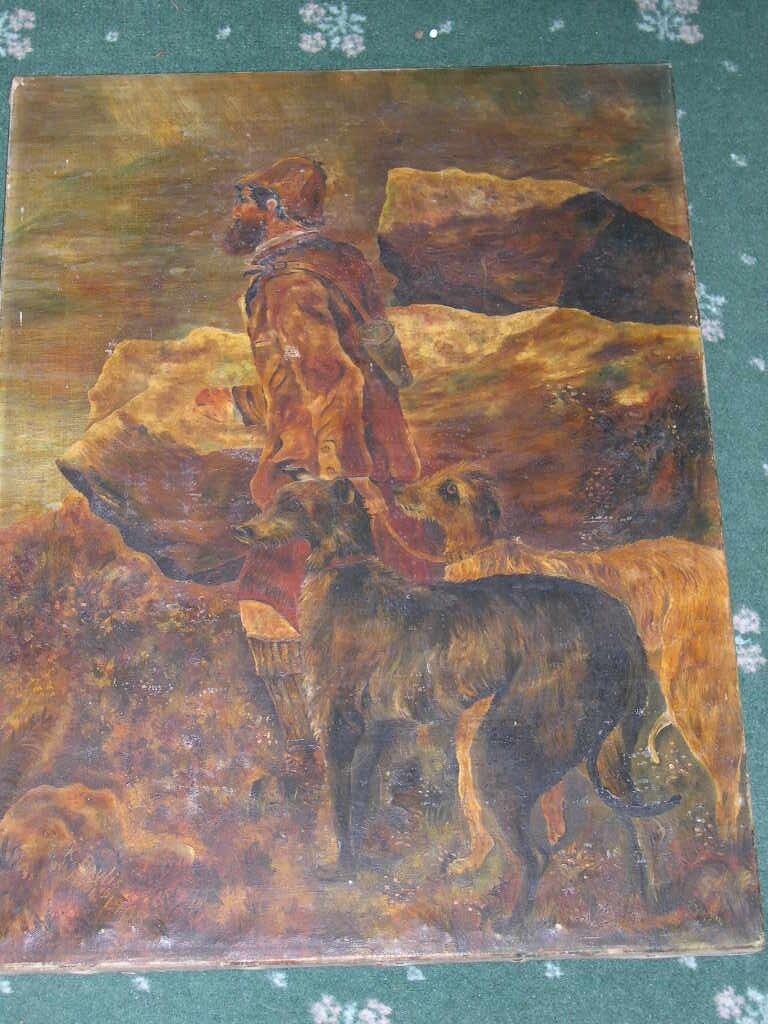-40%
SINGLE Edwin Megargee Scottish Deerhound bookplate 1958 National Geographic Mag
$ 5.27
- Description
- Size Guide
Description
VintageEdwin Megargee
Scottish Deerhound
SINGLE Book plate from
1958 National Geographic Magazine
Page is 7" x 10"
Exquisite for framing!!
From a SMOKE FREE Home!!
WILL COMBINE SHIPPING!!
CHECK out my other listings!!
MANY VINTAGE CHILDREN'S BOOKS, Jewelry and DOG PRINTS!!
Edwin Megargee
(American, 1883 -1958 )
Edwin Megargee is best known for his direct portraits of pure bred dogs. Not of a romantic temperament, he created animal portraits which truly reflected how the animal looked, and in that sense was more of an illustrator that many of his nineteenth century predecessors in the world of dog painting. In the tradition of the pure-bred dog portrait, Megargee’s dogs are typically posed to show off how they conform to the standard for the breed. Megargee also depicted sporting dogs in the field, or pet dogs relaxing at home, but the vast majority of his canine works were of commissioned pure-bred show dogs.
To say that Megargee was a dog person would be a great understatement, for his love of animals in general - and dogs in particular - went back to his early childhood. Talking about his work to P.C. Long for “The American Kennel Club Gazette,” he proclaimed that “ As far back as I can remember, I used to lie on my stomach and draw pictures of animals. I think every small boy tries to draw dogs and cats because these are the creatures closest to his heart. The complete understanding between a small boy and his dog still seems rather wonderful to me...”
Megargee grew up in and around Philadelphia, and at an early age was drawing every sort of animal. Indeed, at the age of sixteen, he convinced his father that he was going to be an artist when he grew up. After finishing grade school, he went to Georgetown University for a year, only to return to live with his family. He then went to Drexel University to study art. His first work was as an illustrator, at one time being hired by The Scranton International Textbook company to illustrate a book on domestic fowl. After living for a time in Cranford, New Jersey, Edwin and his family moved to New York in 1919. He attended art classes at the now-famous Art Students’ League and studied under such artists as Kenyon Cox, Vincent du Mond and Walter A. Clarke.
The Art Students League opened in 1875, partially in response to what some considered an entrenched, conservative attitude on the part of The National Academy of Design. Founded by the artist and teacher, Lemuel Wilmarth, the League was much more inclusive in its membership, and membership ensured participation in life classes, whereby artists could paint a living model. Classes of three hours duration were held daily, with afternoons reserved for women, and evenings allocated to male students.
The school eventually thrived, offering a broad range of artistic study, and eventually had an open enrollment whereby students could enroll in classes without meeting any prerequisites. The school flourished and it is still holding classes in its permanent home at 215 West 57th Street, a home it hd moved to in 1892.
Megargee’s academic training and his love of animals made him naturally gravitate to animal painting, and he slowly began to receive the commissions which would establish his reputation as a painter of pure-bred dogs. Working out of his studio in Union Square in New York City, Megargee was very much a pure dog man, for although he was in New York, he was an important breeder of Scottish Terriers, an exhibitor and a dog show judge. He co-owned the famous Tobermory Kennels with Marguerite Kirmse. He was also a governor of The Scottish Terrier Club of America for many years and the president of the club for two years. He was a Delegate to The American Kennel Club first for the Los Angeles Kennel Club and then for The Louisiana Kennel Club for several years. His father in law, T. Inglee, was the president of The American Kennel Club from 1932-1933 and he himself served on the Board of Directors from 1928 to 1931.
Like the English dog painter, Maud Earl, Megargee had a way with animals, and as P.C. Long put it in an article on him in the New York Herald Tribune, “All animals have a sort of sixth sense in selecting people in whom to place their confidence... I have never known a horse or a dog that would not obey his slightest command. I have never known one that would not give him complete and perfect devotion. After all, this may the best measure of his character, both as a man and as an artist.” Indeed, it was just this skill that he shared with artists like Maud Earl, for without the use of a camera, he was in a few short minutes able to calm a dog, and have them pose for him for a very long time.
Megargee’s skill as a painter, his extensive training and his understanding of pure-bred dogs made him an ideal artist to paint many of the nation’s top show dogs. His paintings illustrated many publications including Field and Stream, and Country Life as well as several books published by the prestigious Derrydale press. He preferred pure bred animals of all sorts, saying that, “blood will tell....Well bred dogs will give their all of affection and loyalty in the face of death itself. To me a purebred animal seems proud of its lineage. I have never known a pedigreed dog to be a snake or a coward when put to the test...”
Among the most well-known dogs that he painted was a series of Poodles for Mr. and Mrs. Sherman Hoyt, owners of the famous Blakeen kennels. The kennel, named after their farm of Holstein cattle, was to become a legend in the breed. The Hoyts were very serious, traveling extensively in their research on Poodles. In their travels they came across the white Poodle, Ch. Duc de la Terrace of Blakeen, which was duly imported and later won the Group at The Wesminster Kennel Club in 1934. In 1935 he was the first Poodle to go Best in Show at the prestigious Westminster Kennel Club. The Duc’s son and daughter, Ch. Blakeen Eiger and Ch. Blakeen Jungfrau were the first poodles to win Best Brace Westminster. Over the years, the kennels enjoyed many other honors.
Many other well-known dogs were painted by Megargee, including several portraits of Mary Crane’s famous Great Pyrenees dogs Mr. and Mrs. Frances V. Crane were instrumental in developing this French breed in America, importing the first of the breed into this country, and actively developing an important breeding program. Among the paintings which Mrs. Crane commissioned from Megargee, and which are now all in the Museum’s collection, are portraits of International Champions Estat and Estagel Argeles as well as Basquaerie, Marsous and Ch Urdos de Soum.
Megargee was proud that his paintings were to become important historic records of the famous purebred dogs of the day, and one of his most important commissions in this regard was for the beautiful ocean liner, the S. S. America. Under the guidance of the Bedlington breeder, Colonel P.V.G. Mitchell of Rowanoaks Kennels fame, Megargee was commissioned to paint 24 circular portraits of well known pure bred dogs to adorn the doors of each kennel. It was truly an extraordinary commission, and only fine examples of each breed were chosen. Megargee completed two paintings of each subject - one for the Ocean Liner and one for the owner of the dog. It is surprising that more of these portraits have not surfaced, but the American Kennel Club is fortunate in having a complete photographic set of them, reproducing each canine likeness.
Megargee did not aspire to more than the exact recording of the likeness of an animal. He saw this as a strength rather than a detraction in his work. He tried not to romanticize his subject, but to portray them as they were. As the artist himself pointed out in 1934, “Early in my career I determined to portray animals as they actually are and I studied the anatomy and structure of birds and animals until I could have articulated the skeleton of anything from a hen to a horse.” Megargee set out to create straight forward portraits of pure bred dogs and other animals, and this was to be his strength and his principal artistic legacy. In the end, it was the pure bred dog that mattered, and he created an extraordinary artistic and historic legacy of he dog. We are fortunate indeed to have so many examples of his work in The American Kennel Club in New York City, and the American Kennel Club Museum of The Dog in Saint Louis.
In short:
• Dimensions:
- The total width of the rolling pin: 40 cm (15,74 inches)
- The width of the surface of rolling: 20 cm (7,87 inches)
- Diameter: 5,6 cm (2,20 inches)
• Great fun for the whole family!
• A perfect birthday and dog exhibition gift
• All of our items are shipped with a courier - we want to be sure that your order reaches you in the shortest possible time!
Product description:
It was never such easy to create decorative cookies like it is with this embossing rolling-pin! Prepare the best cookies for dog lovers in seconds!
Art-Dog presents the collection of wooden engraved rolling pins with original patterns with dog and breed name. Probably, you never have tasted cookies with doggy pattern before and now you can :) High-quality, standard size rolling pins are made of beech wood. Engraving is perfectly executed by a professional cutting and engraving Trotec laser.
The rolling pin is ideal for decorating baked goods such as cookies for every occasion. For best results choose pastry that does not rise during baking.
Great fun for the whole family - create unique treats for your loved ones!
This item is excellent gift idea for birthday, housewarming party, Christmas and many more.
Parameters:
- The total width of the rolling pin: 40 cm (15,74 inches)
- The width of the surface of rolling: 20 cm (7,87 inches)
- Diameter: 5,6 cm (2,20 inches)
Materials:
wood
Delivery times vary for each continent:
Europe: 3 to 5 days
North America, South America, Africa and Asia: 3 to 7 days
Australia: 3 to 10 days
All parcels are insured and ART-DOG guarantees that you will receive your purchase in good state. In case of a damaged/missing order we will send you a new product.










